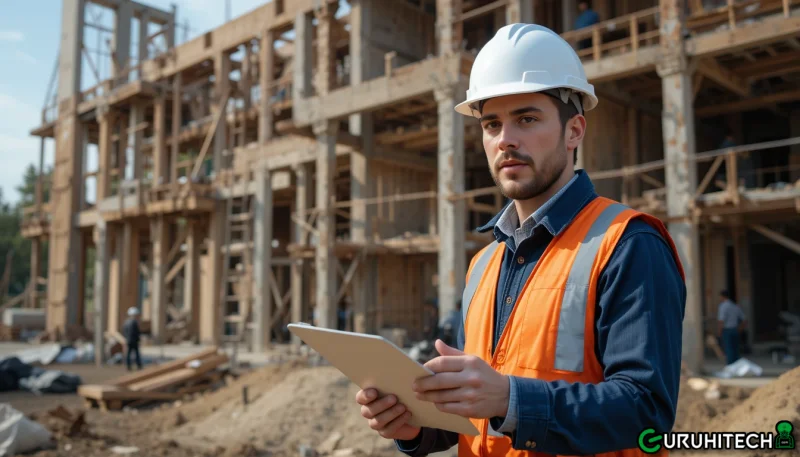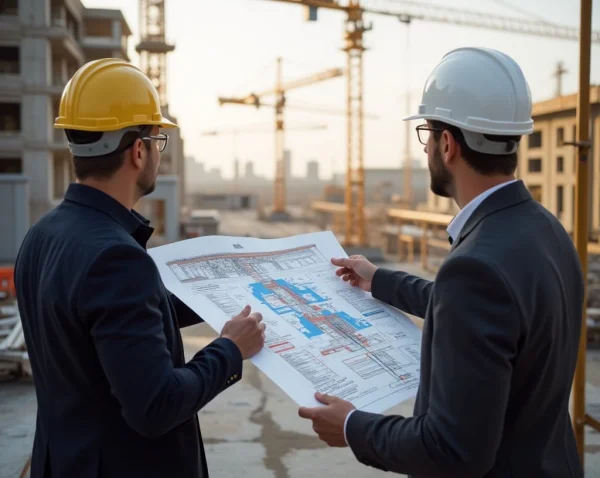5 Techniques for Controlling Risk in Construction Projects

Construction comes with risk. But most of it’s avoidable with the right systems in place. It starts with planning – not guesswork. Then it’s about who you involve, what tools you use, how often you reassess, how clearly you communicate, and especially infrastructure monitoring.
This guide lays out the core steps that cut risk on site and keep projects running steady. No fluff. Just what works.
Let’s get started.
1. Comprehensive Project Planning
A project without a plan is like a building without a foundation. Wobbly, risky and likely to collapse. Detailed planning can sniff out risks before they become real problems.
Here’s a golden rule – don’t plan in a bubble. Get everyone involved early. Contractors, clients, designers, suppliers. The lot.
Why? Because each one brings a different lens. One might flag budget risks. Another might spot design flaws. Together, they build a better plan.
Tech can be a game-changer, especially with tools like Building Information Modelling (BIM). Sounds fancy, but it’s all about visualising the entire project in 3D.
Imagine spotting clashes before a single brick is laid. That’s BIM magic. It helps teams see the whole picture. Everyone’s on the same page.
Less guesswork. Fewer surprises. Lower risk.
2. Regular Risk Assessments
Planning excellent, but risks don’t stop there. They sneak in at every stage. That’s why ongoing checks are key.
One area that needs constant attention? Working at height risk assessment. It’s a significant cause of accidents. Don’t just assess once. Reassess. And then reassess again.
Think of audits as health checks for your project. Regular ones can uncover new risks before they blow up.
Maybe the weather has delayed deliveries. Or a contractor has changed suppliers. These little shifts can create significant issues. Regular audits keep tabs on it all.
Make them part of the schedule. Not an afterthought.
Change is constant in construction. Plans shift. But ignoring these changes? That’s risky.
Risk management should flex with the project. If something new crops up, adjust the strategy. Don’t wait until it’s too late.
A nimble approach keeps things safe and steady.
3. Safety Training and Awareness
Let’s face it: construction sites can be dangerous. One misstep and someone could get hurt. That’s why safety isn’t just a box to tick. It’s a priority.
Good training can make all the difference. It reduces accidents. Builds confidence. And keeps everyone compliant.
No cutting corners here. Construction site safety training should be mandatory. Everyone needs it – from seasoned pros to newbies.
Cover the basics: PPE, machinery, first aid. Then, go deeper. Train for specific tasks and hazards. Make sure every worker knows the risks and how to handle them.
Refresh it regularly. What worked last year might be outdated now.
Training shouldn’t stop after induction. Safety standards change—new equipment rolls in. Learning must be ongoing.
Encourage workers to stay updated. Host refresher courses. Bring in experts. Keep the team sharp and informed.
4. Implementing Robust Quality Control
Quality and risk go hand-in-hand. Cut corners on quality, and risks multiply. It’s that simple.
Firm quality control keeps things in check. It prevents rework, delays and disasters.
Inspections are like early warning systems. Regular checks help catch problems before they grow.
Set a schedule. Daily, weekly, monthly, or whatever fits the project. Make it routine.
Inspect materials. Check work against plans. Review safety gear. Don’t let anything slip through the cracks.
And if something’s off? Fix it fast.
Cheap materials might save a few quid upfront. But they cost more later. Breakages, replacements, safety issues – it all adds up.
Invest in quality from the start. Use trusted suppliers. Check certifications. Don’t compromise.
Suitable materials build strong, safe structures. That’s what everyone wants, right?
5. Effective Communication Strategies
Clear, constant communication is vital in safety systems. It keeps teams aligned, prevents confusion and helps spot risks early.
Start the day with a quick chat with the team. Ask things like, “What’s happening? What’s changing? Any hazards?”
These briefings set the tone. They get everyone on the same page. Even five minutes can make a difference.
Use them to flag concerns, share updates and answer questions. Keep them short but sharp.

General Tips for Controlling Risk in Construction Projects
There’s no such thing as too much precaution. It is the resposibility of everyone on construction sites, including the employer, safety offers, managers, and workers, to do everything in their power and authority to protect themselves and other others from risks of construction tasks.
Here are some general tips to control risks on construction sites.
1. Use Qualified Contractors and Suppliers
Work only with contractors and suppliers who have a good track record. Vet them properly. Check references, financial stability, past project experience, and safety records.
2. Document Everything
Records of all construction tasks, safety measures, near misses, incidents and inspections. Documentation limits disputes and helps track decisions.
3. Monitor Progress Regularly
Conduct site inspections. Compare actual vs planned progress. Spot problems early and take immediate action. Don’t rely on assumptions or delayed updates.
4. Implement Health and Safety Controls
Risk to workers is high in construction. Enforce safety rules. Provide training. Use signage, PPE, and barriers. Assign safety officers and conduct audits.
5. Use Technology to Assess Risks and Perfom Hazardous Tasks
Tools like BIM, drones, sensors, and project management software reduce errors, help forecasting, and improve coordination.
6. Build in Contingencies
Allow extra time and money in your plan for unexpected events. A 10–15% buffer helps absorb shocks without derailing the project.
Conclusion
Construction is a risky business. But with the proper techniques, those risks become manageable.
Start with solid planning. Involve everyone. Use the best tools. Keep assessing risks throughout. Don’t stop adapting.
Train your team like their lives depend on it – because they do. Keep quality front and centre. And talk a lot. Share updates. Use tech. Stay connected.
Do all that? You’ll dodge the big problems. Your project stays safe, smooth and successful.
And who doesn’t want that?
Ti potrebbe interessare:
Segui guruhitech su:
- Google News: bit.ly/gurugooglenews
- Telegram: t.me/guruhitech
- X (Twitter): x.com/guruhitech1
- Bluesky: bsky.app/profile/guruhitech.bsky.social
- GETTR: gettr.com/user/guruhitech
- Rumble: rumble.com/user/guruhitech
- VKontakte: vk.com/guruhitech
- MeWe: mewe.com/i/guruhitech
- Skype: live:.cid.d4cf3836b772da8a
- WhatsApp: bit.ly/whatsappguruhitech
Esprimi il tuo parere!
Ti è stato utile questo articolo? Lascia un commento nell’apposita sezione che trovi più in basso e se ti va, iscriviti alla newsletter.
Per qualsiasi domanda, informazione o assistenza nel mondo della tecnologia, puoi inviare una email all’indirizzo [email protected].
Scopri di più da GuruHiTech
Abbonati per ricevere gli ultimi articoli inviati alla tua e-mail.
